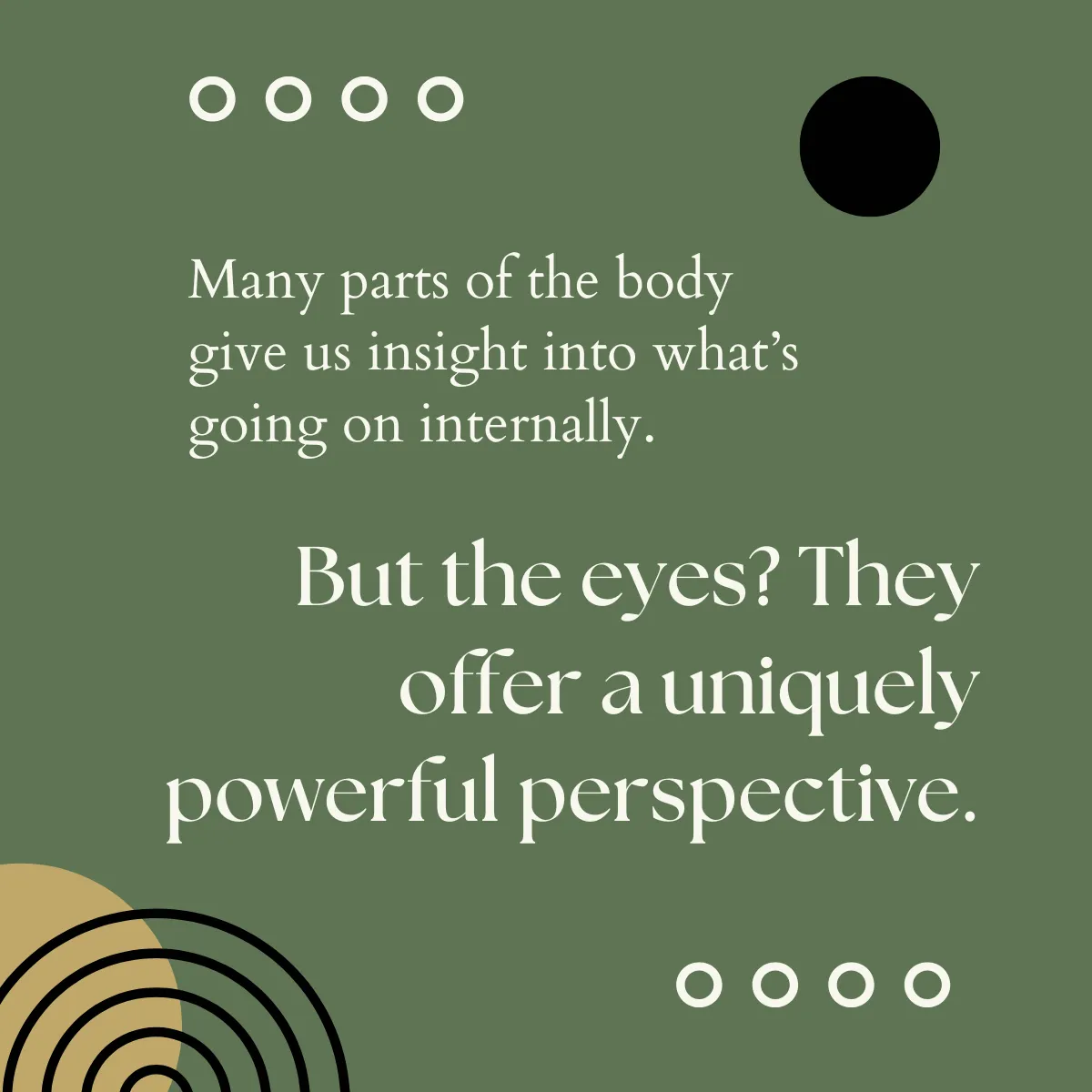Cobblestone Health
For Your Health, Naturally
Let's improve your health, naturally,
book and appointment by calling 403-850-5503
email [email protected]
or click to schedule your first appointment

What Is Iridology
Many parts of the body give us clues about what’s going on inside.
Think of TCM with pulse and tongue diagnosis, fingernail diagnosis, and trichology. These are just a few that come to mind.
The eyes also give us clues. When we use the eyes in this way, we look at the pupils, irides, and sclerae. Each one offers different types of information.
Iridology has been under development for close to 200 years. Research in North America stalled after World War 2. It’s only in the last 40ish years that research in Constitutional Iridology has really picked up and moved forward.
Iridology is not related to visual health.
In iridology we assess three parts of the eye, (pupil, iris, sclera) to assess health tendencies and understand the inner workings of the body.
Some of what we see in the eyes is inherent - traits passed down from the previous three or four generations. Some of what we see is epigenetic, showing potential imbalances that are based in genetics but are only just now being activated.This is mostly in the iris. And some of it is completely dynamic. Many of the changes we see in the sclera are revealing current situations which may or may not be rooted in genetics.
By assessing the size and shape of the pupil we can gain a deeper understanding of spinal alignment and nervous system function. This helps us understand symptoms and guides our recommendations. Often, the recommendation here is to seek spinal care.
The markings (fiber patterns, pigment distribution) of the iris are genetically determined and give us genetic and epigenetic information, showing us where the strengths and weaknesses are.
We use the irides to understand the client’s symptoms, to guide the questions we ask, and to make recommendations for the improvement of health.
The sclera is the most dynamic part of the eye. Some blood vessels are visible at a very young age. This gives us a specific type of information even into adulthood. Many blood vessels and other scleral markings develop as we mature and as imbalances start to brew.
Understanding sclera markings adds even more depth to our understanding of the client and to the questions we need to ask.
By combining what we see for pupil indicators and iris and sclera markings with the clients symptoms our questions are guided to help us get the deeper information we need to make appropriate recommendations. We never do an ‘iris reading’ without background information. To do so would be to make assumptions that do not take into account diet, lifestyle, surgeries, injuries, medication, and their impact on organ function.
A truly useful eye analysis involves the client.
© Cobblestone Health Ltd; 2024 and beyond. All rights reserved.



